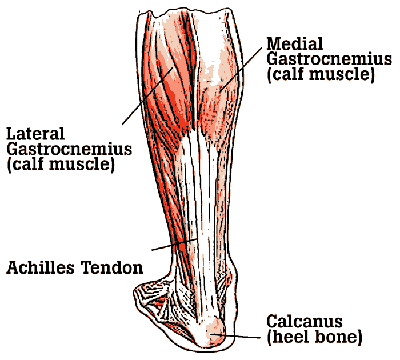 In response to some recent successes by several companies operating in the cervical cancer space, we are issuing a two-part special report exploring pre-cervical cancer and CIN.
In response to some recent successes by several companies operating in the cervical cancer space, we are issuing a two-part special report exploring pre-cervical cancer and CIN.
 In response to some recent successes by several companies operating in the cervical cancer space, we are issuing a two-part special report exploring pre-cervical cancer and CIN. Part I of this report is a survey of the conditions: a description of how CIN and similar diseases affect the body, the domestic and international prevalence and at-risk groups, as well as the analysis of leading cancer advocacy groups and publications identifying the advantages and shortcomings of mainstream treatments.
In response to some recent successes by several companies operating in the cervical cancer space, we are issuing a two-part special report exploring pre-cervical cancer and CIN. Part I of this report is a survey of the conditions: a description of how CIN and similar diseases affect the body, the domestic and international prevalence and at-risk groups, as well as the analysis of leading cancer advocacy groups and publications identifying the advantages and shortcomings of mainstream treatments.
Part II of the report identifies several disruptive technologies that may overcome the challenges of mainstream treatments. In light of some favorable recent news from Advaxis, we pay particular attention to cancer immunotherapy vaccination, an area that is rapidly drawing interest.
***********************
Most of the interest surrounding cervical intraepithelial neoplasia (CIN) hinges upon its relation to cervical cancer. CIN is viewed in the medical world as a pre-cancerous condition, albeit one that is often curable when treated properly.
The National Institutes of Healthdefines CIN as abnormal changes in the cells on the surface of the cervix that are seen on a biopsy, and groups CIN into three categories: CIN I (mild dysplasia); CIN II (ranging from moderate to marked dysplasia); and CIN III (ranging from severe dysplasia to carcinoma in situ). An important fact distinguishing CIN I/II/III from cancer is that CIN is limited to the “skin” of the cervix, and has not invaded the underlying tissue, according to Advanced Gynecology Solutions.
The majority of CIN cases occur in women ages 25 – 35, although it can develop at any age. According to MedLine Plus, almost all cases of CIN or cervical cancer are caused by HPV, a common virus that is spread through sexual contact.
Factors that are associated with increased risk of developing CIN include: becoming sexually active before the age of 18; giving birth before the age of 16; having multiple sexual partners; having other illnesses, and/or taking medications that suppress the immune system; and smoking tobacco.
According to Wolters Kluwer Health, the goal in managing women with CIN is to prevent possible progression to invasive cancer while striving to avoid the overtreatment of lesions that are likely to regress. Women with low-grade CIN (CIN I) have minimal potential for developing cervical cancer. However, those with high grade lesions (CIN II/III) are at high risk of progression to malignancy.
According to Health Central, more than one million women each year are diagnosed with low-grade CIN, and 500,000 women are found to have CIN II/III. Of the 500,000 precancerous lesions diagnosed annually in the US, 50-60 percent are attributable to HPV 16 or HPV 18. The Centers for Disease Control and Prevention (CDC) estimates that about 10,800 new cases of HPV-associated cervical cancer are diagnosed in the US each year.
Cervical cancer is the second-most common malignancy in women worldwide, and remains a leading cause of cancer-related death for women in developing countries, according to MedScape Today News. Interestingly, while the incidence rate of invasive cervical cancer has continued to rise in many developing countries in the past few decades, it has declined steadily in the US.
The change in the epidemiological trend in the United States has been attributed to mass screening with Pap smears, newly approved HPV vaccines and treatment of pre-invasive CIN. Nonetheless, the CDC reports that in 2007, 12,280 women in the US were diagnosed with cervical cancer, and 4,021 women in the United States died from the disease.
*****************
No treatment is typically needed in cases of mild CIN, though a healthcare provider will often administer more frequent Pap tests or colposcopies to see if the cells have changed. Treatments in cases of moderate to severe CIN vary in strategy, all of which, however, are quite invasive.
One such treatment is cautery, a procedure that burns away abnormal cervical cells by sending an electric current through a small metal rod. Conization surgery is used when abnormal cells have traveled into the cervical canal, or when abnormal cells cover a large area of the cervix. Cryotherapy is the administration of a cold gas to freeze and kill abnormal cells on the cervix to prevent spreading. Laser therapy involves the usage of intense light to destroy abnormal cells. Loop electrosurgical excisional procedure (LEEP) cuts out abnormal cells from the cervix using a fine-wire loop that attached to an electrical machine.
In 2009, however, an international team of researchers concluded that women diagnosed with and treated for CIN remain at a higher risk for either recurrence of the disease or for invasive cervical cancer. Dr. Melnikow of University of California Davis reported that in the first six years after treatment, the rate of CIN II/III recurrence – as well as the risk of developing invasive cancer – was higher for women over 40 who were originally diagnosed with CIN III, and for those who were originally treated with cryotherapy.
Cryotherapy happens to be the first treatment on the American Cancer Society (ACS) list of “Standard Treatment of Cervical Pre-cancer (Such as CIN).” The World Health Organization (WHO) also recommends cryotherapy as an effective treatment for CIN.









